編輯:關於Android編程
前言
作為一個開發者,日常會接觸到很多優秀的軟件,其實,或多或少會有這樣的想法,我能不能開發一個自己軟件,甚至辦公軟件都希望是Markdown的文本,為何用office?我常常想自己做一個IDE什麼的。但是,很多只是想了一下就過了,一直沒有實現.
我接觸思維導圖軟件已經很久的了,開始是使用微軟的思維導圖軟件,接著XMind,後來使用了MindMaple Lite。感覺很好用的。也想過如何去實現一個思維導圖的軟件,加之我特別注意軟件的快捷鍵,我選取軟件常常是,看快捷如何,快捷鍵差的就不要了。基於自己的實踐使用思維導圖。前一個月我就在github上實現了一個樹形圖的Android控件,這個其實是我想實現思維導圖的開始。實現後,才發現並沒有多大的障礙。下面我就說說我如何打造一個樹形控件的。先上效果:
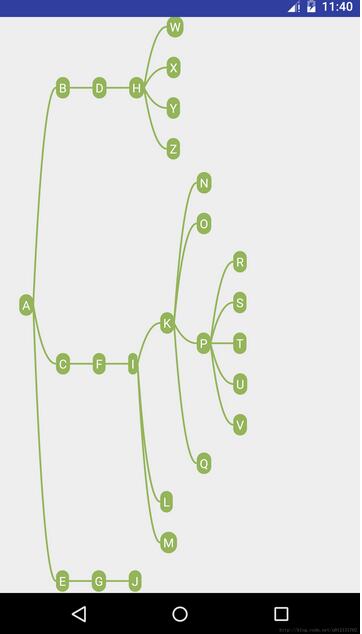
效果1
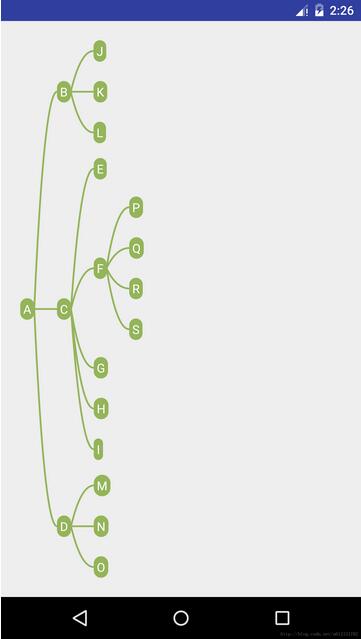
效果2
實現
一步一步可奪城。將自己要實現的東西肢解,那些實現得了的?那些未知的?
思路步驟概要
整個結構分為:樹形,節點; 對於Android的結構有:模型(樹形,節點),View;
詳細步驟
看到思路步驟概要後,相信我們的思路已經很清晰了。感覺是不是很simple,是的,實現也如此。到這裡了,我就開始編碼。但是為了教會大家,我提幾個疑問給大家:
樹的遍歷如何實現?(可以google,如果你學過數據結構當然simple了)
節點和節點這間使用什麼關聯?(next)
如何確定Node的位置?位置有什麼規律?(??)
如何實現兩個View之間的連線?(??)
……
其實問題還真的有一點。但是這些都不能妨礙我們的步伐,還是寫好已知的代碼吧 。
代碼
1.樹的節點。主要是一些需要的數據。父節點,值,子節點,是否對焦(對於將來用的),在樹形的層……
package com.owant.drawtreeview.model;
import java.util.LinkedList;
/**
* Created by owant on 16/12/2016.
*/
public class TreeNode<T> {
/**
* the parent node,if root node parent node=null;
*/
public TreeNode<T> parentNode;
/**
* the data value
*/
public T value;
/**
* have the child nodes
*/
public LinkedList<TreeNode<T>> childNodes;
/**
* focus tag for the tree add nodes
*/
public boolean focus;
/**
* index of the tree floor
*/
public int floor;
public TreeNode(T value) {
this.value = value;
this.childNodes = new LinkedList<TreeNode<T>>();
// this.focus = false;
// this.parentNode = null;
}
public TreeNode<T> getParentNode() {
return parentNode;
}
public void setParentNode(TreeNode<T> parentNode) {
this.parentNode = parentNode;
}
public T getValue() {
return value;
}
public void setValue(T value) {
this.value = value;
}
public LinkedList<TreeNode<T>> getChildNodes() {
return childNodes;
}
public void setChildNodes(LinkedList<TreeNode<T>> childNodes) {
this.childNodes = childNodes;
}
public boolean isFocus() {
return focus;
}
public void setFocus(boolean focus) {
this.focus = focus;
}
public int getFloor() {
return floor;
}
public void setFloor(int floor) {
this.floor = floor;
}
}
2.樹形。根節點,添加節點,遍歷,上一個節點,下一個節點,基於點拆分的上下節點集合。
package com.owant.drawtreeview.model;
import java.util.ArrayDeque;
import java.util.ArrayList;
import java.util.Deque;
import java.util.LinkedList;
import java.util.Stack;
/**
* Created by owant on 16/12/2016.
*/
public class Tree<T> {
/**
* the root for the tree
*/
public TreeNode<T> rootNode;
public Tree(TreeNode<T> rootNode) {
this.rootNode = rootNode;
}
/**
* add the node in some father node
*
* @param start
* @param nodes
*/
public void addNode(TreeNode<T> start, TreeNode<T>... nodes) {
int index = 1;
TreeNode<T> temp = start;
if (temp.getParentNode() != null) {
index = temp.getParentNode().floor;
}
for (TreeNode<T> t : nodes) {
t.setParentNode(start);
t.setFloor(index);
start.getChildNodes().add(t);
}
}
public boolean remvoeNode(TreeNode<T> starNode, TreeNode<T> deleteNote) {
boolean rm = false;
int size = starNode.getChildNodes().size();
if (size > 0) {
rm = starNode.getChildNodes().remove(deleteNote);
}
return rm;
}
public TreeNode<T> getRootNode() {
return rootNode;
}
public void setRootNode(TreeNode<T> rootNode) {
this.rootNode = rootNode;
}
/**
* 同一個父節點的上下
*
* @param midPreNode
* @return
* @throws NotFindNodeException
*/
public TreeNode<T> getLowNode(TreeNode<T> midPreNode) {
TreeNode<T> find = null;
TreeNode<T> parentNode = midPreNode.getParentNode();
if (parentNode != null && parentNode.getChildNodes().size() >= 2) {
Deque<TreeNode<T>> queue = new ArrayDeque<>();
TreeNode<T> rootNode = parentNode;
queue.add(rootNode);
boolean up = false;
while (!queue.isEmpty()) {
rootNode = (TreeNode<T>) queue.poll();
if (up) {
if (rootNode.getFloor() == midPreNode.getFloor()) {
find = rootNode;
}
break;
}
//到了該元素
if (rootNode == midPreNode) up = true;
LinkedList<TreeNode<T>> childNodes = rootNode.getChildNodes();
if (childNodes.size() > 0) {
for (TreeNode<T> item : childNodes) {
queue.add(item);
}
}
}
}
return find;
}
public TreeNode<T> getPreNode(TreeNode<T> midPreNode) {
TreeNode<T> parentNode = midPreNode.getParentNode();
TreeNode<T> find = null;
if (parentNode != null && parentNode.getChildNodes().size() > 0) {
Deque<TreeNode<T>> queue = new ArrayDeque<>();
TreeNode<T> rootNode = parentNode;
queue.add(rootNode);
while (!queue.isEmpty()) {
rootNode = (TreeNode<T>) queue.poll();
//到了該元素
if (rootNode == midPreNode) {
//返回之前的值
break;
}
find = rootNode;
LinkedList<TreeNode<T>> childNodes = rootNode.getChildNodes();
if (childNodes.size() > 0) {
for (TreeNode<T> item : childNodes) {
queue.add(item);
}
}
}
if (find != null && find.getFloor() != midPreNode.getFloor()) {
find = null;
}
}
return find;
}
public ArrayList<TreeNode<T>> getAllLowNodes(TreeNode<T> addNode) {
ArrayList<TreeNode<T>> array = new ArrayList<>();
TreeNode<T> parentNode = addNode.getParentNode();
while (parentNode != null) {
TreeNode<T> lowNode = getLowNode(parentNode);
while (lowNode != null) {
array.add(lowNode);
lowNode = getLowNode(lowNode);
}
parentNode = parentNode.getParentNode();
}
return array;
}
public ArrayList<TreeNode<T>> getAllPreNodes(TreeNode<T> addNode) {
ArrayList<TreeNode<T>> array = new ArrayList<>();
TreeNode<T> parentNode = addNode.getParentNode();
while (parentNode != null) {
TreeNode<T> lowNode = getPreNode(parentNode);
while (lowNode != null) {
array.add(lowNode);
lowNode = getPreNode(lowNode);
}
parentNode = parentNode.getParentNode();
}
return array;
}
public LinkedList<TreeNode<T>> getNodeChildNodes(TreeNode<T> node) {
return node.getChildNodes();
}
public void printTree() {
Stack<TreeNode<T>> stack = new Stack<>();
TreeNode<T> rootNode = getRootNode();
stack.add(rootNode);
while (!stack.isEmpty()) {
TreeNode<T> pop = stack.pop();
System.out.println(pop.getValue().toString());
LinkedList<TreeNode<T>> childNodes = pop.getChildNodes();
for (TreeNode<T> item : childNodes) {
stack.add(item);
}
}
}
public void printTree2() {
Deque<TreeNode<T>> queue = new ArrayDeque<>();
TreeNode<T> rootNode = getRootNode();
queue.add(rootNode);
while (!queue.isEmpty()) {
rootNode = (TreeNode<T>) queue.poll();
System.out.println(rootNode.getValue().toString());
LinkedList<TreeNode<T>> childNodes = rootNode.getChildNodes();
if (childNodes.size() > 0) {
for (TreeNode<T> item : childNodes) {
queue.add(item);
}
}
}
}
}
3.測試模型 當我們實現了模型後,要寫一些列子來測試模型是否正確,進行打印,遍歷等測試,這是很重要的。對於樹形的node的上一個node和下一個node的理解等。
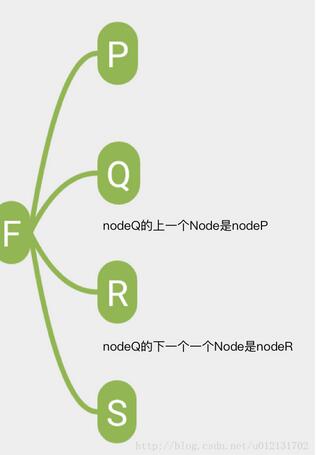
4.樹形的View
package com.owant.drawtreeview.view;
import android.content.Context;
import android.graphics.Canvas;
import android.graphics.Paint;
import android.graphics.Path;
import android.util.AttributeSet;
import android.util.Log;
import android.util.TypedValue;
import android.view.View;
import android.view.ViewGroup;
import com.owant.drawtreeview.R;
import com.owant.drawtreeview.model.Tree;
import com.owant.drawtreeview.model.TreeNode;
import java.util.ArrayDeque;
import java.util.ArrayList;
import java.util.Deque;
import java.util.LinkedList;
/**
* Created by owant on 09/01/2017.
*/
public class SuperTreeView extends ViewGroup {
/**
* the default x,y mDx
*/
private int mDx;
private int mDy;
private int mWith;
private int mHeight;
private Context mContext;
private Tree<String> mTree;
private ArrayList<NodeView> mNodesViews;
public SuperTreeView(Context context) {
this(context, null, 0);
}
public SuperTreeView(Context context, AttributeSet attrs) {
this(context, attrs, 0);
}
public SuperTreeView(Context context, AttributeSet attrs, int defStyleAttr) {
super(context, attrs, defStyleAttr);
mContext = context;
mNodesViews = new ArrayList<>();
mContext = context;
mDx = dp2px(mContext, 26);
mDy = dp2px(mContext, 22);
}
/**
* 添加view到Group
*/
private void onAddNodeViews() {
if (mTree != null) {
TreeNode<String> rootNode = mTree.getRootNode();
Deque<TreeNode<String>> deque = new ArrayDeque<>();
deque.add(rootNode);
while (!deque.isEmpty()) {
TreeNode<String> poll = deque.poll();
NodeView nodeView = new NodeView(mContext);
nodeView.setTreeNode(poll);
ViewGroup.LayoutParams lp = new ViewGroup.LayoutParams(LayoutParams.WRAP_CONTENT, LayoutParams.WRAP_CONTENT);
nodeView.setLayoutParams(lp);
this.addView(nodeView);
mNodesViews.add(nodeView);
LinkedList<TreeNode<String>> childNodes = poll.getChildNodes();
for (TreeNode<String> ch : childNodes) {
deque.push(ch);
}
}
}
}
@Override
protected void onMeasure(int widthMeasureSpec, int heightMeasureSpec) {
super.onMeasure(widthMeasureSpec, heightMeasureSpec);
final int size = getChildCount();
for (int i = 0; i < size; i++) {
measureChild(getChildAt(i), widthMeasureSpec, heightMeasureSpec);
}
}
@Override
protected void onLayout(boolean changed, int l, int t, int r, int b) {
mHeight = getMeasuredHeight();
mWith = getMeasuredWidth();
if (mTree != null) {
NodeView rootView = findTreeNodeView(mTree.getRootNode());
if (rootView != null) {
//root的位置
rootTreeViewLayout(rootView);
//標准位置
for (NodeView nv : mNodesViews) {
standardTreeChildLayout(nv);
}
//基於父子的移動
for (NodeView nv : mNodesViews) {
fatherChildCorrect(nv);
}
}
}
}
private void rootTreeViewLayout(NodeView rootView) {
int lr = mDy;
int tr = mHeight / 2 - rootView.getMeasuredHeight() / 2;
int rr = lr + rootView.getMeasuredWidth();
int br = tr + rootView.getMeasuredHeight();
rootView.layout(lr, tr, rr, br);
}
@Override
protected void dispatchDraw(Canvas canvas) {
if (mTree != null) {
drawTreeLine(canvas, mTree.getRootNode());
}
super.dispatchDraw(canvas);
}
/**
* 標准的位置分布
*
* @param rootView
*/
private void standardTreeChildLayout(NodeView rootView) {
TreeNode<String> treeNode = rootView.getTreeNode();
if (treeNode != null) {
//所有的子節點
LinkedList<TreeNode<String>> childNodes = treeNode.getChildNodes();
int size = childNodes.size();
int mid = size / 2;
int r = size % 2;
//基線
// b
// a-------
// c
//
int left = rootView.getRight() + mDx;
int top = rootView.getTop() + rootView.getMeasuredHeight() / 2;
int right = 0;
int bottom = 0;
if (size == 0) {
return;
} else if (size == 1) {
NodeView midChildNodeView = findTreeNodeView(childNodes.get(0));
top = top - midChildNodeView.getMeasuredHeight() / 2;
right = left + midChildNodeView.getMeasuredWidth();
bottom = top + midChildNodeView.getMeasuredHeight();
midChildNodeView.layout(left, top, right, bottom);
} else {
int topLeft = left;
int topTop = top;
int topRight = 0;
int topBottom = 0;
int bottomLeft = left;
int bottomTop = top;
int bottomRight = 0;
int bottomBottom = 0;
if (r == 0) {//偶數
for (int i = mid - 1; i >= 0; i--) {
NodeView topView = findTreeNodeView(childNodes.get(i));
NodeView bottomView = findTreeNodeView(childNodes.get(size - i - 1));
if (i == mid - 1) {
topTop = topTop - mDy / 2 - topView.getMeasuredHeight();
topRight = topLeft + topView.getMeasuredWidth();
topBottom = topTop + topView.getMeasuredHeight();
bottomTop = bottomTop + mDy / 2;
bottomRight = bottomLeft + bottomView.getMeasuredWidth();
bottomBottom = bottomTop + bottomView.getMeasuredHeight();
} else {
topTop = topTop - mDy - topView.getMeasuredHeight();
topRight = topLeft + topView.getMeasuredWidth();
topBottom = topTop + topView.getMeasuredHeight();
bottomTop = bottomTop + mDy;
bottomRight = bottomLeft + bottomView.getMeasuredWidth();
bottomBottom = bottomTop + bottomView.getMeasuredHeight();
}
topView.layout(topLeft, topTop, topRight, topBottom);
bottomView.layout(bottomLeft, bottomTop, bottomRight, bottomBottom);
bottomTop = bottomView.getBottom();
}
} else {
NodeView midView = findTreeNodeView(childNodes.get(mid));
midView.layout(left, top - midView.getMeasuredHeight() / 2, left + midView.getMeasuredWidth(),
top - midView.getMeasuredHeight() / 2 + midView.getMeasuredHeight());
topTop = midView.getTop();
bottomTop = midView.getBottom();
for (int i = mid - 1; i >= 0; i--) {
NodeView topView = findTreeNodeView(childNodes.get(i));
NodeView bottomView = findTreeNodeView(childNodes.get(size - i - 1));
topTop = topTop - mDy - topView.getMeasuredHeight();
topRight = topLeft + topView.getMeasuredWidth();
topBottom = topTop + topView.getMeasuredHeight();
bottomTop = bottomTop + mDy;
bottomRight = bottomLeft + bottomView.getMeasuredWidth();
bottomBottom = bottomTop + bottomView.getMeasuredHeight();
topView.layout(topLeft, topTop, topRight, topBottom);
bottomView.layout(bottomLeft, bottomTop, bottomRight, bottomBottom);
bottomTop = bottomView.getBottom();
}
}
}
}
}
/**
* 移動
*
* @param rootView
* @param dy
*/
private void moveNodeLayout(NodeView rootView, int dy) {
Deque<TreeNode<String>> queue = new ArrayDeque<>();
TreeNode<String> rootNode = rootView.getTreeNode();
queue.add(rootNode);
while (!queue.isEmpty()) {
rootNode = (TreeNode<String>) queue.poll();
rootView = findTreeNodeView(rootNode);
int l = rootView.getLeft();
int t = rootView.getTop() + dy;
rootView.layout(l, t, l + rootView.getMeasuredWidth(), t + rootView.getMeasuredHeight());
LinkedList<TreeNode<String>> childNodes = rootNode.getChildNodes();
for (TreeNode<String> item : childNodes) {
queue.add(item);
}
}
}
private void fatherChildCorrect(NodeView nv) {
int count = nv.getTreeNode().getChildNodes().size();
if (nv.getParent() != null && count >= 2) {
TreeNode<String> tn = nv.getTreeNode().getChildNodes().get(0);
TreeNode<String> bn = nv.getTreeNode().getChildNodes().get(count - 1);
Log.i("see fc", nv.getTreeNode().getValue() + ":" + tn.getValue() + "," + bn.getValue());
int topDr = nv.getTop() - findTreeNodeView(tn).getBottom() + mDy;
int bnDr = findTreeNodeView(bn).getTop() - nv.getBottom() + mDy;
//上移動
ArrayList<TreeNode<String>> allLowNodes = mTree.getAllLowNodes(bn);
ArrayList<TreeNode<String>> allPreNodes = mTree.getAllPreNodes(tn);
for (TreeNode<String> low : allLowNodes) {
NodeView view = findTreeNodeView(low);
moveNodeLayout(view, bnDr);
}
for (TreeNode<String> pre : allPreNodes) {
NodeView view = findTreeNodeView(pre);
moveNodeLayout(view, -topDr);
}
}
}
/**
* 繪制樹形的連線
*
* @param canvas
* @param root
*/
private void drawTreeLine(Canvas canvas, TreeNode<String> root) {
NodeView fatherView = findTreeNodeView(root);
if (fatherView != null) {
LinkedList<TreeNode<String>> childNodes = root.getChildNodes();
for (TreeNode<String> node : childNodes) {
drawLineToView(canvas, fatherView, findTreeNodeView(node));
drawTreeLine(canvas, node);
}
}
}
/**
* 繪制兩個View直接的連線
*
* @param canvas
* @param from
* @param to
*/
private void drawLineToView(Canvas canvas, View from, View to) {
Paint paint = new Paint();
paint.setAntiAlias(true);
paint.setStyle(Paint.Style.STROKE);
float width = 2f;
paint.setStrokeWidth(dp2px(mContext, width));
paint.setColor(mContext.getResources().getColor(R.color.chelsea_cucumber));
int top = from.getTop();
int formY = top + from.getMeasuredHeight() / 2;
int formX = from.getRight();
int top1 = to.getTop();
int toY = top1 + to.getMeasuredHeight() / 2;
int toX = to.getLeft();
Path path = new Path();
path.moveTo(formX, formY);
path.quadTo(toX - dp2px(mContext, 15), toY, toX, toY);
canvas.drawPath(path, paint);
}
private NodeView findTreeNodeView(TreeNode<String> node) {
NodeView v = null;
for (NodeView view : mNodesViews) {
if (view.getTreeNode() == node) {
v = view;
continue;
}
}
return v;
}
public int dp2px(Context context, float dpVal) {
int result = (int) TypedValue.applyDimension(TypedValue.COMPLEX_UNIT_DIP, dpVal, context.getResources()
.getDisplayMetrics());
return result;
}
public void setTree(Tree<String> tree) {
this.mTree = tree;
onAddNodeViews();
}
public Tree<String> getTree() {
return mTree;
}
}
粘貼代碼後發現,沒有什麼好說了,對於讀者來說,應該是一臉懵逼的。畢竟,那個位置是如何確定的呀,view和view的連線呀…… 對於整個View來說這是最難的,我也是探索了好久才得出結論的。首先,對於一個只有兩層的樹形來說,如圖:
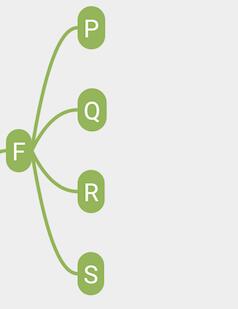
PQRS是基於F來計算的,之後分布。之後我就得到的方法如下:
/**
* 標准的位置分布
*
* @param rootView
*/
private void standardTreeChildLayout(NodeView rootView) {
TreeNode<String> treeNode = rootView.getTreeNode();
if (treeNode != null) {
//所有的子節點
LinkedList<TreeNode<String>> childNodes = treeNode.getChildNodes();
int size = childNodes.size();
int mid = size / 2;
int r = size % 2;
//基線
// b
// a-------
// c
//
int left = rootView.getRight() + mDx;
int top = rootView.getTop() + rootView.getMeasuredHeight() / 2;
int right = 0;
int bottom = 0;
if (size == 0) {
return;
} else if (size == 1) {
NodeView midChildNodeView = findTreeNodeView(childNodes.get(0));
top = top - midChildNodeView.getMeasuredHeight() / 2;
right = left + midChildNodeView.getMeasuredWidth();
bottom = top + midChildNodeView.getMeasuredHeight();
midChildNodeView.layout(left, top, right, bottom);
} else {
int topLeft = left;
int topTop = top;
int topRight = 0;
int topBottom = 0;
int bottomLeft = left;
int bottomTop = top;
int bottomRight = 0;
int bottomBottom = 0;
if (r == 0) {//偶數
for (int i = mid - 1; i >= 0; i--) {
NodeView topView = findTreeNodeView(childNodes.get(i));
NodeView bottomView = findTreeNodeView(childNodes.get(size - i - 1));
if (i == mid - 1) {
topTop = topTop - mDy / 2 - topView.getMeasuredHeight();
topRight = topLeft + topView.getMeasuredWidth();
topBottom = topTop + topView.getMeasuredHeight();
bottomTop = bottomTop + mDy / 2;
bottomRight = bottomLeft + bottomView.getMeasuredWidth();
bottomBottom = bottomTop + bottomView.getMeasuredHeight();
} else {
topTop = topTop - mDy - topView.getMeasuredHeight();
topRight = topLeft + topView.getMeasuredWidth();
topBottom = topTop + topView.getMeasuredHeight();
bottomTop = bottomTop + mDy;
bottomRight = bottomLeft + bottomView.getMeasuredWidth();
bottomBottom = bottomTop + bottomView.getMeasuredHeight();
}
topView.layout(topLeft, topTop, topRight, topBottom);
bottomView.layout(bottomLeft, bottomTop, bottomRight, bottomBottom);
bottomTop = bottomView.getBottom();
}
} else {
NodeView midView = findTreeNodeView(childNodes.get(mid));
midView.layout(left, top - midView.getMeasuredHeight() / 2, left + midView.getMeasuredWidth(),
top - midView.getMeasuredHeight() / 2 + midView.getMeasuredHeight());
topTop = midView.getTop();
bottomTop = midView.getBottom();
for (int i = mid - 1; i >= 0; i--) {
NodeView topView = findTreeNodeView(childNodes.get(i));
NodeView bottomView = findTreeNodeView(childNodes.get(size - i - 1));
topTop = topTop - mDy - topView.getMeasuredHeight();
topRight = topLeft + topView.getMeasuredWidth();
topBottom = topTop + topView.getMeasuredHeight();
bottomTop = bottomTop + mDy;
bottomRight = bottomLeft + bottomView.getMeasuredWidth();
bottomBottom = bottomTop + bottomView.getMeasuredHeight();
topView.layout(topLeft, topTop, topRight, topBottom);
bottomView.layout(bottomLeft, bottomTop, bottomRight, bottomBottom);
bottomTop = bottomView.getBottom();
}
}
}
}
}
之後等到的View情況如下:
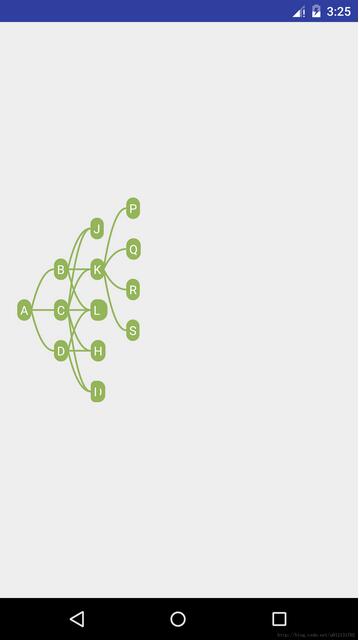
說明我們還需要糾正。下面是糾正的探索,我精簡一下結構如下情況:
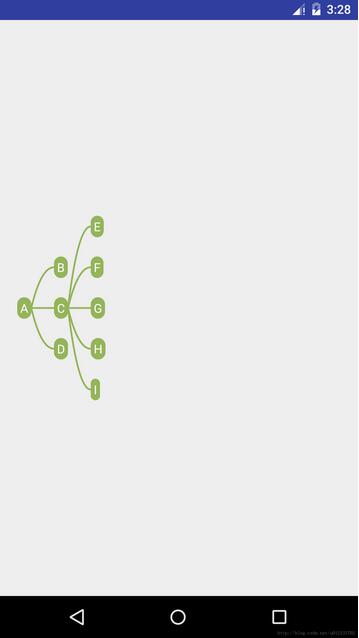
發現:
B需要在E的上面;
D需要在I的下面;
就是EI要撐開ID的位置。之後我們可以先寫這個算法,發現基本可以了。但是還是有問題,同層的還是會重合,只有我們又進行同層的糾正。發現好像解決了,其實還是不行,測試還是發現問題,對於單伸長還有問題,之後又是修改…………
最後發現……這裡就不說了,就是自己要探索啦。
總結
最後我才發現了那個完善的糾正算法,就是代碼了的。大家可以在我的github中找到我之前的TreeView中的那個位置算法探索。歡迎大家支持:https://github.com/owant/TreeView
以上就是本文的全部內容,希望對大家的學習有所幫助,也希望大家多多支持本站。
 網易雲音樂怎麼查看歌詞
網易雲音樂怎麼查看歌詞
網易雲音樂怎麼查看歌詞?如果你在網易雲音樂客戶端中聽音樂,卻找不到歌詞時,一定會很郁悶。其實,網易雲音樂是支持在線音樂播放加顯示歌詞的哦!那麼網易雲音樂怎麼
 小米手環支持其他型號的手機嗎
小米手環支持其他型號的手機嗎
小米手環支持什麼手機,是不是只有小米手機才能用?那麼到底小米手環支持什麼手機?小米手環支持其他型號的手機嗎?小編這裡就為大家詳細的說明一下小米手環支持其他手
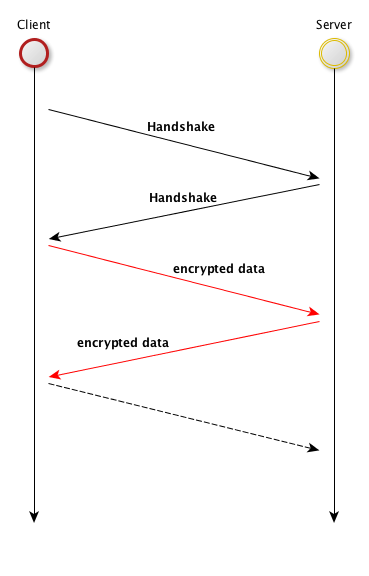 Mina SSL Filter安全加密過濾器相關知識介紹
Mina SSL Filter安全加密過濾器相關知識介紹
原文地址:Mina SSLFilter(Apahce Mina user guide Chapter11 SSL Filter)SslFilter過濾器是負責管理數據的加
 Android制作漂亮自適布局鍵盤的方法
Android制作漂亮自適布局鍵盤的方法
最近做了個自定義鍵盤,但面對不同分辨率的機型其中數字鍵盤不能根據界面大小自已鋪滿,但又不能每種機型都做一套吧,所以要做成自適應,那這裡主講思路。這裡最上面的titleba